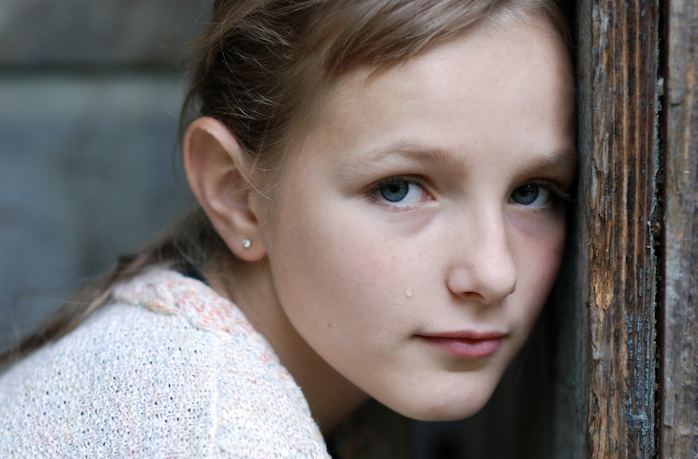Empowering parents to help kids navigate depression
It can be challenging as a parent to know if a child is experiencing the normal ups and downs of adolescence or if it might be something more serious.
According to Denise Gardner, a pediatric psychologist with a Ph.D. in clinical psychology, “It’s important to differentiate between a bad mood, the blues and clinical depression. There are going to be times where people have bad days, maybe even a string of bad days.”
There are some key differences between clinical depression and feeling down. Gardner says, “Clinical depression is when there may or may not be one particular trigger for what’s going on, or the mood you’re experiencing lasts much longer than you would expect based on the trigger and is leading to some sort of dysfunction or impairment.”
If you are unsure about their child’s mood or level of stress – we encourage you to set up an appointment either in person or by telehealth.

Development of depression
Depression can manifest differently in different people. Gardner says, “It’s not only a sad mood or feeling down, but for a lot of people it’s sort of the inability to or a diminished sense of experiencing joy. They just can’t feel happy or can’t find the enjoyment they once had.”
As with anxiety or many other mental health disorders, there may be a genetic disposition. Gardner says, “The disposition doesn’t necessarily mean someone in the family had major depressive disorder. They may have had another mood disorder or anxiety, but the child may be predisposed to it.”
Depression could also be linked to a chemical imbalance. Gardner says, “There are definitely neurochemicals that are related to mood and many other aspects of functioning. When there is maybe an over availability of a certain chemical or not enough of a certain chemical, that definitely can affect mood, stress and sleep.”
Other risk factors could be environmental. “An unsupportive environment or an environment where someone is exposed to stressors, trauma or a lack of a social support network,” says Gardner.
There is also depression that is triggered by an event or experience, such as the pandemic.. Gardner says, “A child who recently lost a family member, lost a pet or is moving and has to move away from their friends and start a new school could be a potential trigger.”
She continues, “Kids are going to have that period of grief, loss or adjustment. But if it’s seeming to last an extended amount of time and if it’s starting to disrupt their functioning, then it’s time to take the next steps.”

Identifying factors of depression
It may be difficult to recognize when someone is experiencing depression, especially when they seem to have a relatively good life. Gardner says, “Sometimes people may not even be able to identify a particular trigger. I’ve had kids say to me, ‘I have a good life, but I still feel depressed.’”
Depression can look different from kid to kid. “For some people, depression really manifests as that sort of sad, depressed mood, isolating yourself and not wanting to talk. But sometimes it looks different. Sometimes it looks more like irritability, grouchiness, crankiness and acting out.”
There are a number of signs to watch out for depression in kids. Gardner says, “It does tend to be more of that irritability, that cranky acting out. And sometimes it could be symptoms like stomach aches or headaches. Some of them may present with the same symptoms that older children or adolescents would present with. But kind of the classic symptoms of depression would be a period of two or more weeks where you’re experiencing depressed mood or feeling down or low.”
Another sign to notice is the child’s enjoyment levels. “Typically, kids would also experience anhedonia, a loss of pleasure or diminished pleasure or interest in things that used to bring you pleasure. We can sometimes see a disturbance in sleep which could be sleeping more than usual, sleeping all day, using sleep as a coping tool or it could be insomnia. The sleep disturbance could go in either direction,” says Gardner.
A lack of concentration and change in eating habits could also be signs of depression. Gardner says, “There could be a disturbance in eating where you feel like you’re eating much more than you typically would, or you don’t have an appetite at all and are eating much less. They also typically have a lot on their minds, so it can be difficult to concentrate on what they need to do. ”

Necessary but uncomfortable conversations
It can be alarming to hear a child express ideas of self-harm or ideation. Gardner says, “Self-harm could mean suicidal ideation, meaning a person thinks about ending their life or it could come in the form of self-injury. They may be inflicting harm without the intention to end their life, like cutting themselves or exhibiting some other self-harm behaviors, but it has a different function than trying to end their life.”
If a parent suspects that their child is engaging in self-harming behavior, Gardner suggests, “Start with some open-ended questions of, ‘Hey, what’s going on here, what is this?’ Avoid jumping to conclusions and judgment. It’s so difficult to talk about self-injury and suicidal ideation, because they are things that many people think they don’t know what the other person’s going to say. They fear being judged or punished in some way.”
Talking about self-harm and suicidal ideation can be uncomfortable. Gardner says,
“It’s important that we be able to be more open in that conversation because suicide is the second leading cause of death for children and adolescents up to early adulthood. There is a lot of stigma around it, and I think it’s a very difficult conversation to have. But it’s important that we start having that conversation or at least ask questions to start the conversation to make sure that it’s not something that feels secretive, or feels like a child has to keep it to themselves if they’re really feeling in danger.”
Preparing responses for these kinds of conversations can be helpful. Gardner says, “When a child says something, parents might say, ‘Oh my goodness, never say that again. That scared me. Don’t talk like that.’ Although it’s a natural response to feeling terrified hearing it, kids might get the message of, ‘I shouldn’t say that again. It really scared my mom. I should just keep that to myself next time I feel that way.’”
“As much as you may feel terrified hearing it, being able to say, ‘Tell me more about it. What’s going on? How can I help you? What can I do?’ in a calm and non-judgmental manner is going to help that child likely be able to open up again to you in the future,” Gardner says.
Essential support network for kids coping with depression
Unfortunately, there is no quick fix when it comes to mental health. Gardner says, “I always try to frame it as if you think about how long this thing took to develop, it could potentially take as much time to reach that end goal. Not necessarily as much time to see any improvement at all. But if this depression has developed over the course of a year, it’s going to take a long time to really get on the other side of it and to really see that improvement.”
There are several ways to help a child with depression including therapy. Gardner says, “One of the goals of therapy is often what we call behavioral activation, where we have kids gradually start to get back into the things that they need to do or want to do in a day. Sometimes when you feel depressed, your motivation and energy are so low, it seems like climbing a mountain to try to do some of those things that you would have just done so easily before. But sometimes if we can break it up into small steps to make goals easier to achieve.”
Making sure the child has a strong support system is important. “Developing that social support network, realizing and recognizing who you can go to, how to go to them, what to say to communicate your emotions so that people around you are just more aware of what’s going on,” says Gardner.
Although there is still a stigma on mental health, understanding how common mental health issues are and staying educated can help normalize this experience to be able to help those struggling best.